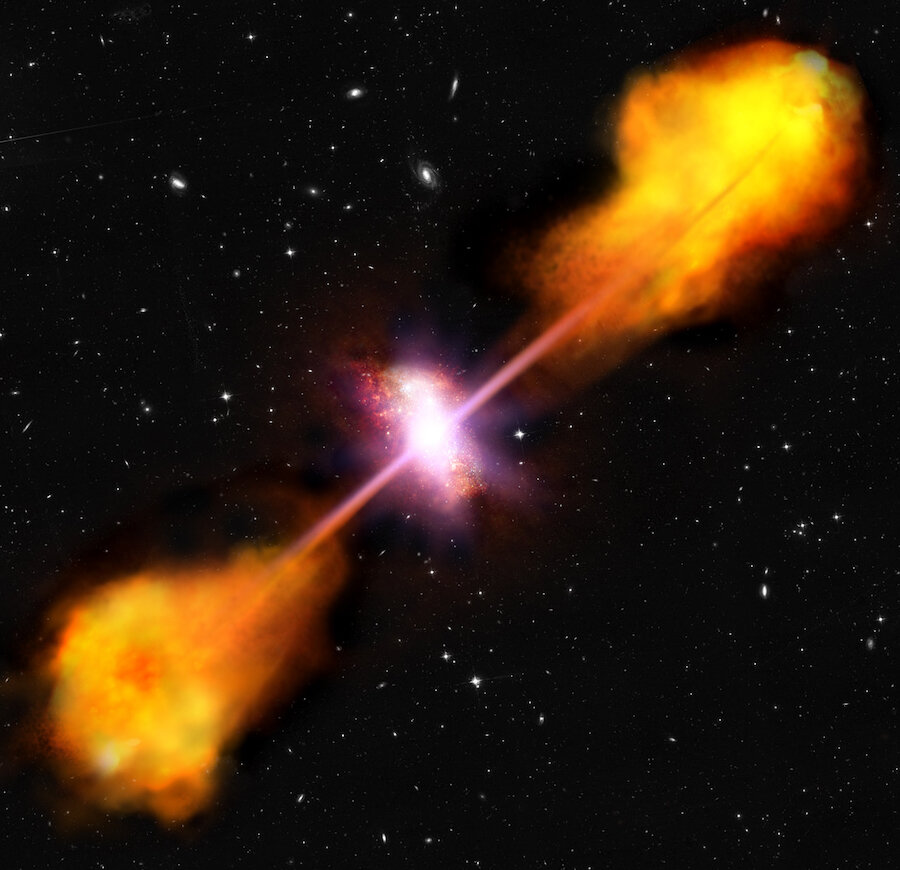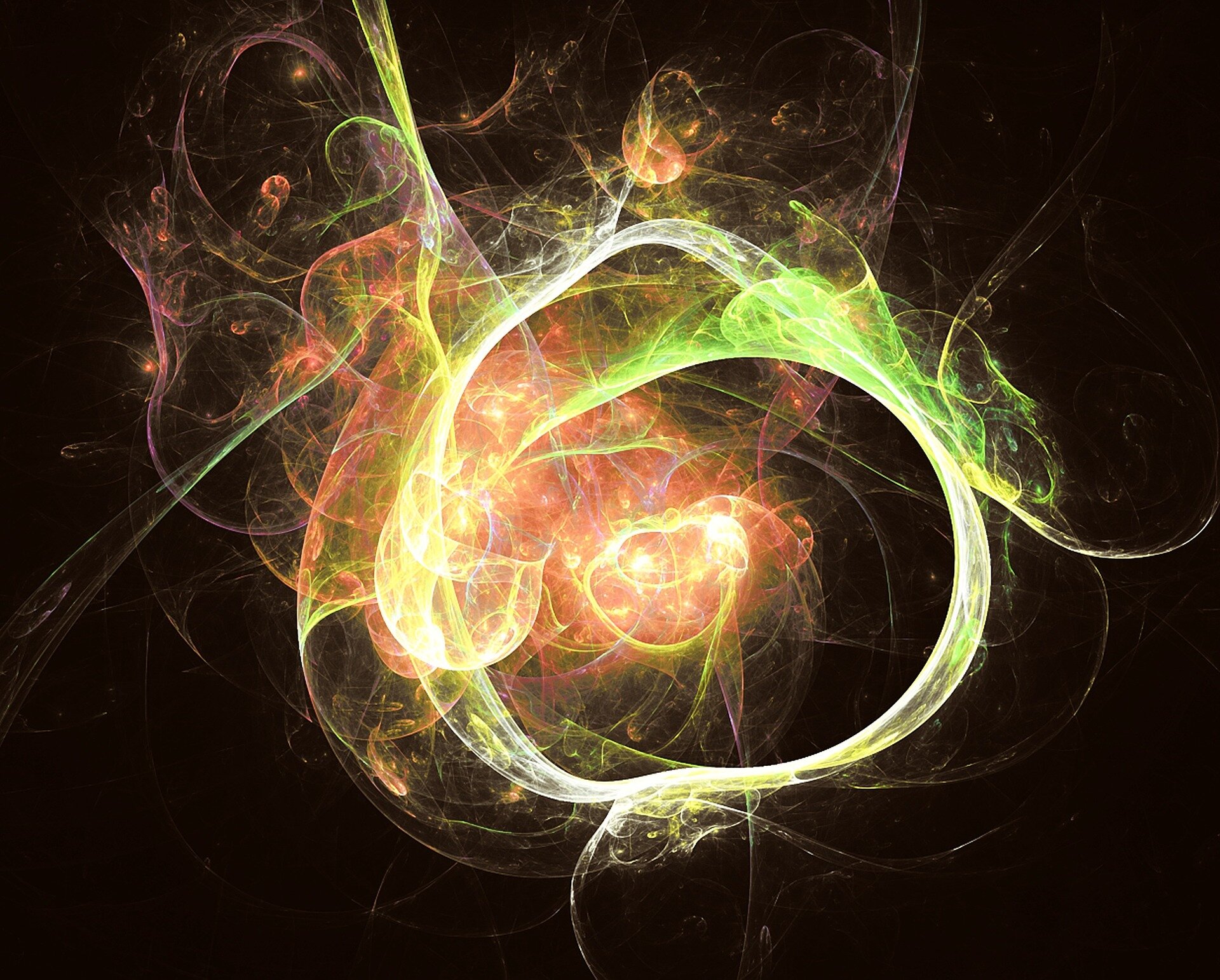#Black holes like to eat, but have a variety of table manners

“#Black holes like to eat, but have a variety of table manners”

All supermassive black holes in the centers of galaxies appear to have periods when they swallow matter from their close surroundings. But that is about as far as the similarities go. That’s the conclusion reached by British and Dutch astronomers from their research with ultra-sensitive radio telescopes in a well-studied region of the universe. They publish their findings in two articles in the international journal Astronomy & Astrophysics.
Astronomers have studied active galaxies since the 1950s. Active galaxies have a super-massive black hole at their center that is swallowing matter. During these active phases, the objects often emit extremely strong radio, infrared, ultraviolet and X-ray radiation.
In two new publications, an international team of astronomers focused on all the active galaxies in the well-studied GOODS-North region in the constellation of Ursa Major. Until now, that region had been studied mainly by space telescopes collecting visible light, infrared light and UV light. The new observations add data from sensitive networks of radio telescopes, including the UK’s e-MERLIN national facility and the European VLBI Network (EVN).
Thanks to this systematic study, three things became clear. Firstly, it turns out that the nuclei of many different types of galaxies can be active in different ways. Some are extremely greedy, gobbling up as much material as they can; others digest their food more slowly, and others are nearly starving.
Secondly, occasionally, an accretion phase occurs simultaneous with a star-formation phase and sometimes not. If star formation is ongoing, activity in the nucleus is difficult to detect.
Thirdly, the nuclear accretion process may or may not generate radio jets—regardless of the speed at which the black hole swallows its food.
According to principal investigator Jack Radcliffe (formerly University of Groningen and ASTRON in the Netherlands and University of Manchester in the United Kingdom, now University of Pretoria, South Africa), the observations also show that radio telescopes are optimally useful to study the eating habits of black holes in the distant universe. “That’s good news, because the SKA radio telescopes are coming, and they will allow us to look deeper into the universe with even more detail.”
Co-author Peter Barthel (University of Groningen, the Netherlands) adds: “We are getting more and more indications that all galaxies have enormously massive black holes in their centers. Of course, these must have grown to their current mass. It seems that, thanks to our observations, we now have these growth processes in view and are slowly but surely starting to understand them.”
Co-author Michael Garrett (University of Manchester, United Kingdom) adds: “These beautiful results demonstrate the unique capacities of radio astronomy. Telescopes such as the VLA, e-MERLIN and the EVN are transforming our view of how galaxies evolve in the early universe.”
Most distant quasar with powerful radio jets discovered
Nowhere to Hide: Radio-faint AGN in the GOODS-N field. By: J.F. Radcliffe et al. Accepted for publication in Astronomy & Astrophysics.
Original: doi.org/10.1051/0004-6361/202038591
Free preprint: arxiv.org/abs/2103.08575v2 arXiv:2103.08575v2 [astro-ph.GA] The radio emission from Active Galactic Nuclei. By: J.F. Radcliffe et al. Accepted for publication in Astronomy & Astrophysics.
Original: www.aanda.org
Free preprint: arxiv.org/abs/2104.04519 arXiv:2104.04519v1 [astro-ph.GA]
Citation:
Black holes like to eat, but have a variety of table manners (2021, April 13)
retrieved 13 April 2021
from https://phys.org/news/2021-04-black-holes-variety-table-manners.html
This document is subject to copyright. Apart from any fair dealing for the purpose of private study or research, no
part may be reproduced without the written permission. The content is provided for information purposes only.
If you liked the article, do not forget to share it with your friends. Follow us on Google News too, click on the star and choose us from your favorites.
For forums sites go to Forum.BuradaBiliyorum.Com
If you want to read more Like this articles, you can visit our Science category.



